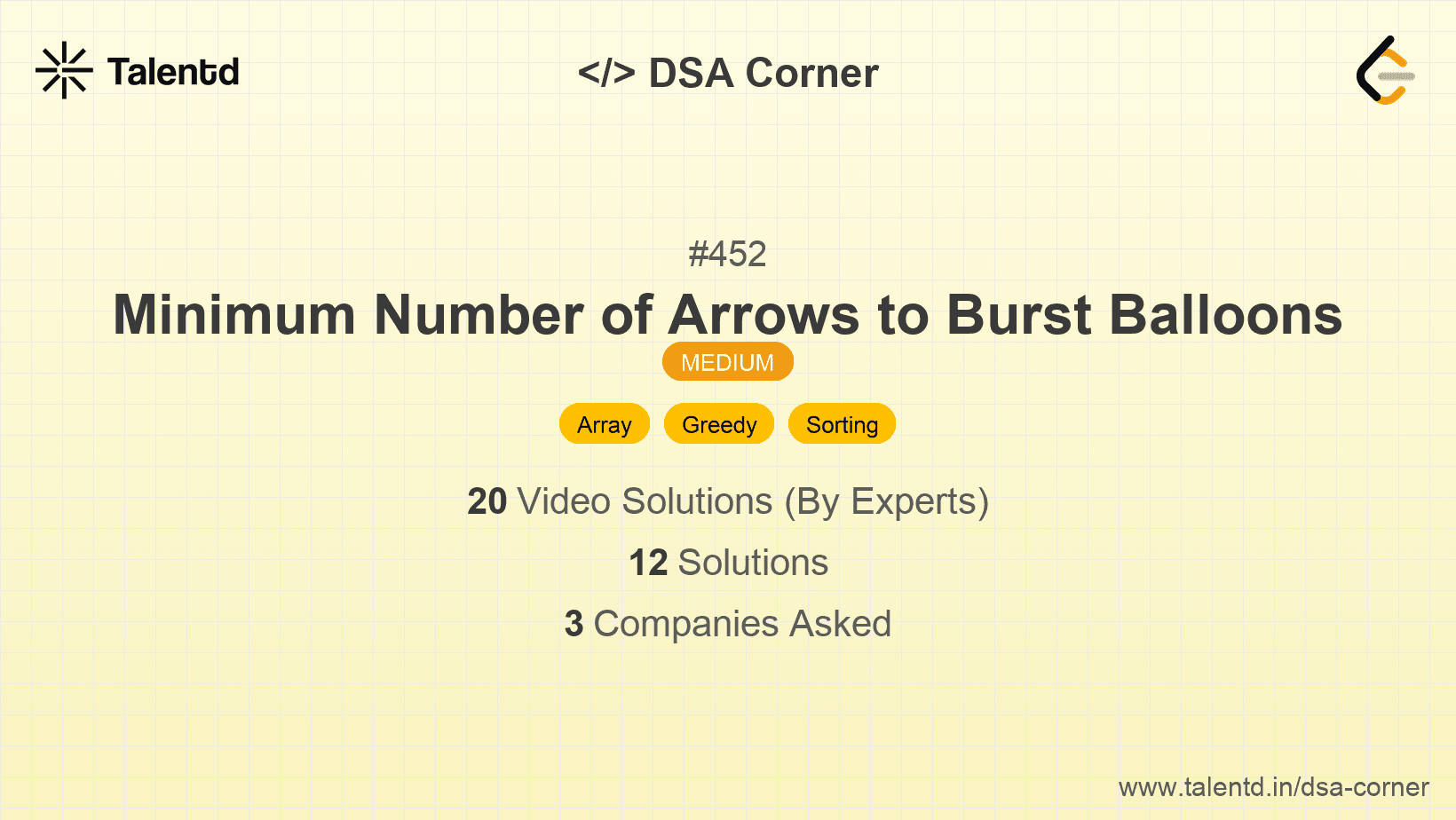
Sponsored
Sponsored
This approach involves sorting the balloons by their end points. Once sorted, we shoot an arrow at the end point of the first balloon, and then continue moving through the list, checking if subsequent balloons overlap with the burst of the arrow. If a balloon does not overlap, we need an additional arrow for it.
Time Complexity: O(n log n) due to the sorting step, where n is the number of balloons.
Space Complexity: O(1) if we ignore the space used for sorting.
1def find_min_arrows(points):
2 if not points:
3 return 0
4
5 points.sort(key=lambda x: x[1])
6 arrows = 1
7 end = points[0][1]
8
9 for x_start, x_end in points:
10 if x_start > end:
11 arrows += 1
12 end = x_end
13
14 return arrows
15
16
17points = [[10, 16], [2, 8], [1, 6], [7, 12]]
18print(find_min_arrows(points))In Python, this solution is implemented by sorting the input array using Python’s default sort function, sorted by the end of each interval.
The loop over sorted balloons checks whether each start point is greater than the ongoing `end`. If true, the 'end' is updated and another arrow is counted, indicating a new position for the next arrow shot after covering the current point.
This approach is adapted from the interval scheduling maximization pattern, where we attempt to find the maximum number of non-overlapping intervals. By sorting the intervals, we can focus on selecting the maximum number of compatible balloons.
Time Complexity: O(n log n) resulting from sorting operations.
Space Complexity: O(1) when sorting space considerations are minimized.
1
The C implementation sorts balloons by their starting x coordinate to maximize the intervals which can overlap and thus require fewer arrows.
Overlapping intervals are managed by checking the end position of current overlaps. If overlaps occur, the continuation of overlapping checks determines the next 'strongly ending' balloon that indicates a need for a new arrow, thereby ensuring no excess arrows.